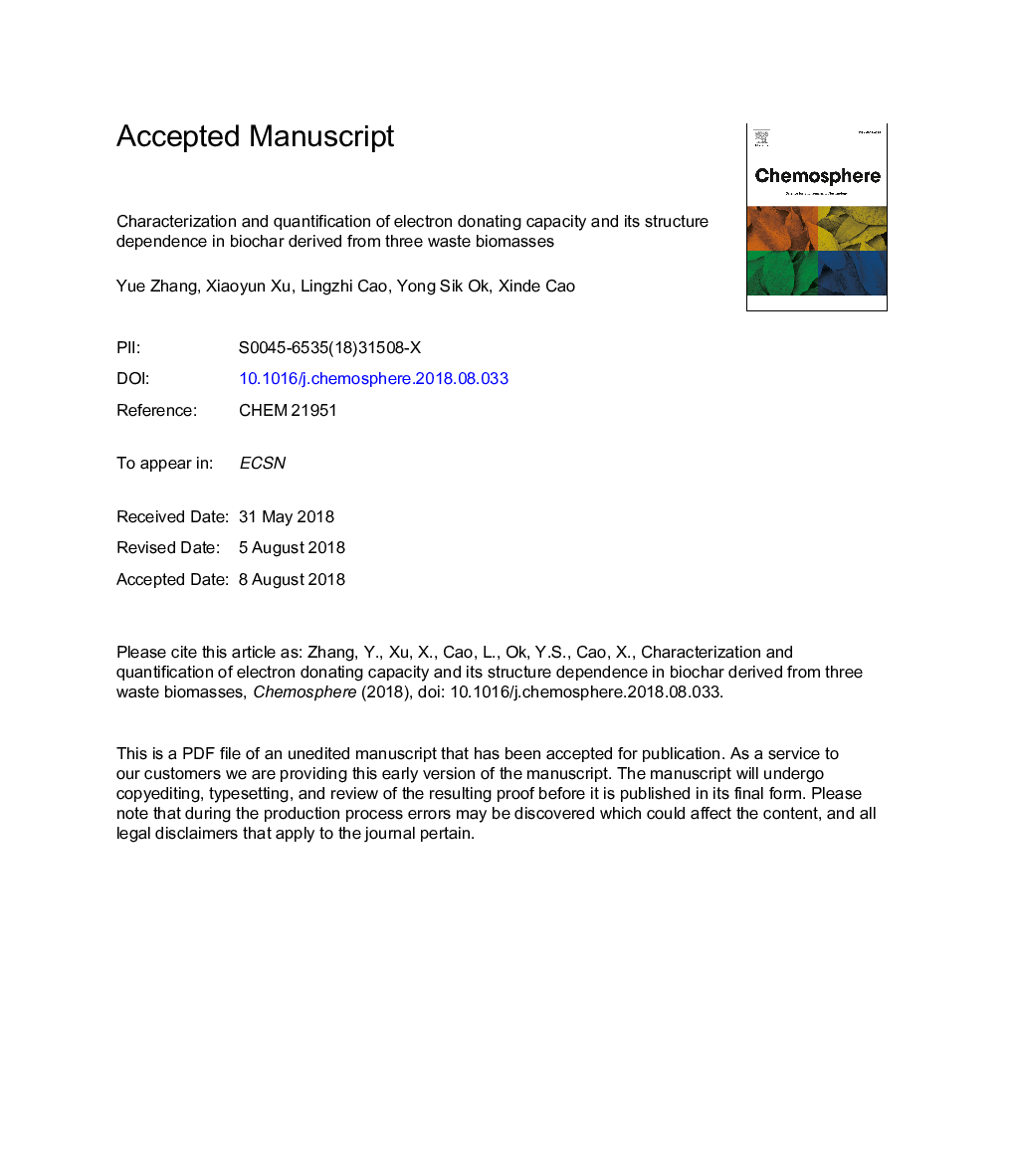| Article ID | Journal | Published Year | Pages | File Type |
|---|---|---|---|---|
| 8850294 | Chemosphere | 2018 | 34 Pages |
Abstract
Biochar has shown a unique electrochemical property being involved in various redox reactions in soil and water. In this study, the electron donating capacities (EDCs) of biochar pyrolyzed at 200-800â¯Â°C from pine wood, barley grass and wheat straw were investigated by using the mediated electrochemical oxidation method. The EDC values for all biochar were in the range of 0.18-1.83â¯mmol eâ (g biochar)â1, showing the increase as the temperature increased from 200â¯Â°C to 400â¯Â°C, the decrease from 400â¯Â°C to 650â¯Â°C, and then increase from 650â¯Â°C until to 800â¯Â°C. At low and intermediate temperatures of 200-650â¯Â°C, the EDCs were mainly attributed to the phenolic hydroxyl groups, while the conjugated Ï-electron system associated with aromatic structure dominated the EDCs of biochar at the high temperatures of over 650â¯Â°C. The barley grass- and wheat straw-derived biochar had higher EDCs than the pine wood-derived biochar, resulting from the higher phenolic hydroxyl groups in the former samples than the latter one. In conclusion, the reductive property of biochar was mainly attributed to both phenolic hydroxy group and conjugated Ï-electron system associated with aromatic structure, depending on the pyrolytic temperature and feedstock source. The results will help us to obtain a complete view on the role of biochar in biogeochemical redox reactions and consider developing biochar with controlled redox properties for specific environmental applications such as electron shuttle and catalyst material.
Related Topics
Life Sciences
Environmental Science
Environmental Chemistry
Authors
Yue Zhang, Xiaoyun Xu, Lingzhi Cao, Yong Sik Ok, Xinde Cao,
